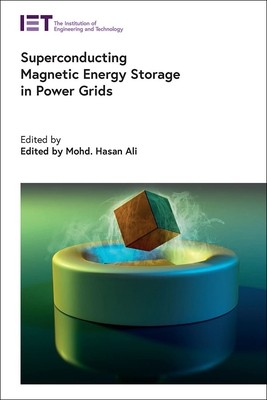
- We will send in 10–14 business days.
- Publisher: Institution of Engineering & Technology
- ISBN-10: 1839535008
- ISBN-13: 9781839535000
- Format: 16.3 x 23.9 x 2 cm, hardcover
- Language: English
- SAVE -10% with code: EXTRA
Superconducting Magnetic Energy Storage in Power Grids (e-book) (used book) | bookbook.eu
Reviews
Description
Energy storage is key to integrating renewable power. Superconducting magnetic energy storage (SMES) systems store power in the magnetic field in a superconducting coil. Once the coil is charged, the current will not stop and the energy can in theory be stored indefinitely. This technology avoids the need for lithium for batteries. The round-trip efficiency can be greater than 95%, but energy is needed for the cooling of the superconducting coil, and the material is expensive. So far, SMES systems are primarily used for improving power quality through short time storage, but further applications are being researched.
This concise treatise for researchers, including PhD students, involved with energy storage research at universities and in industry, experts at utilities and grid operators, as well as advanced students provides a hands-on overview of SMES technology. Chapters cover principles, control, power quality and transient stability enhancement, load frequency control, dynamic performance, use of AI with SMES, and cybersecurity case studies underpin the coverage.
EXTRA 10 % discount with code: EXTRA
The promotion ends in 20d.18:13:06
The discount code is valid when purchasing from 10 €. Discounts do not stack.
- Publisher: Institution of Engineering & Technology
- ISBN-10: 1839535008
- ISBN-13: 9781839535000
- Format: 16.3 x 23.9 x 2 cm, hardcover
- Language: English English
Energy storage is key to integrating renewable power. Superconducting magnetic energy storage (SMES) systems store power in the magnetic field in a superconducting coil. Once the coil is charged, the current will not stop and the energy can in theory be stored indefinitely. This technology avoids the need for lithium for batteries. The round-trip efficiency can be greater than 95%, but energy is needed for the cooling of the superconducting coil, and the material is expensive. So far, SMES systems are primarily used for improving power quality through short time storage, but further applications are being researched.
This concise treatise for researchers, including PhD students, involved with energy storage research at universities and in industry, experts at utilities and grid operators, as well as advanced students provides a hands-on overview of SMES technology. Chapters cover principles, control, power quality and transient stability enhancement, load frequency control, dynamic performance, use of AI with SMES, and cybersecurity case studies underpin the coverage.


Reviews